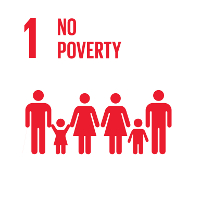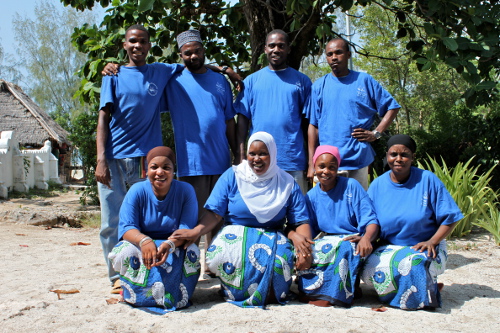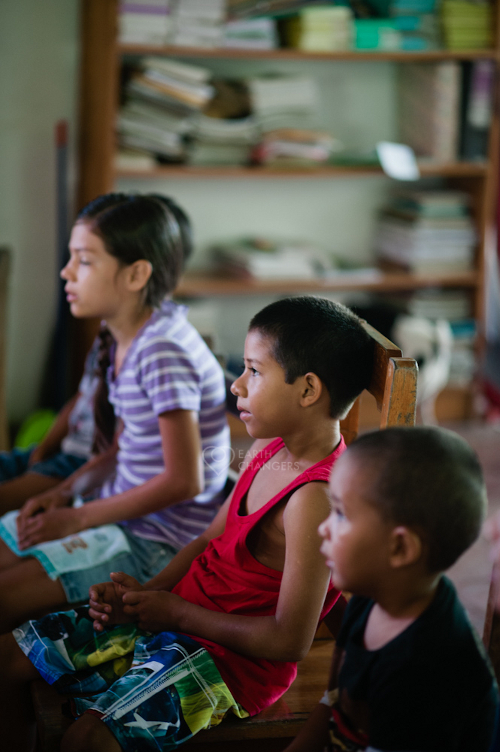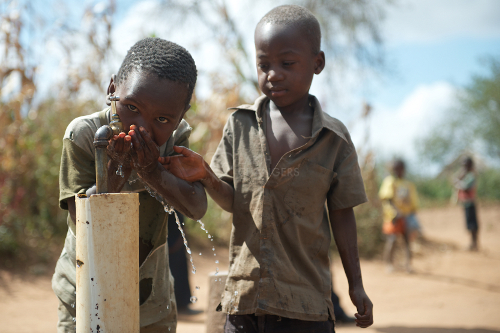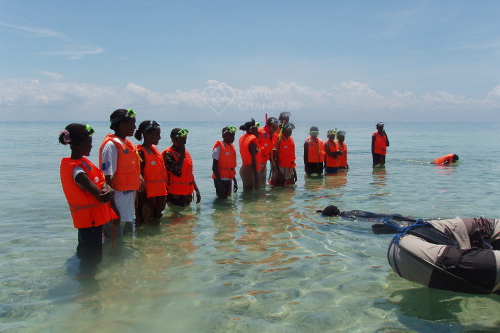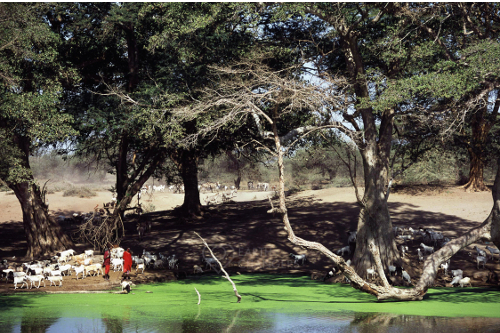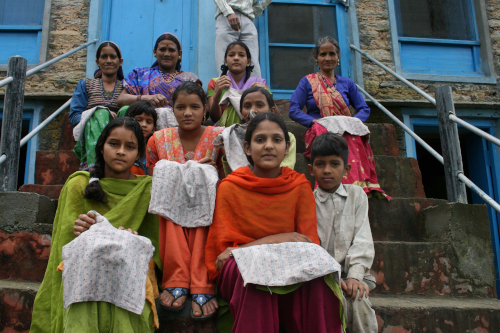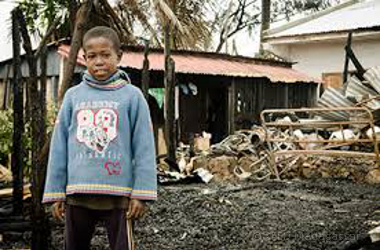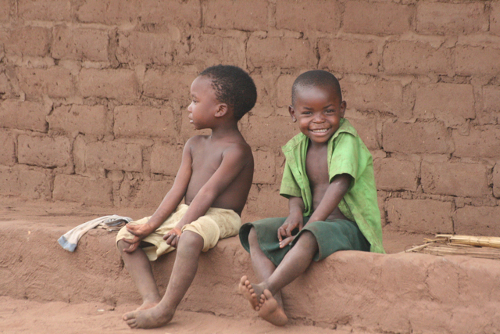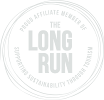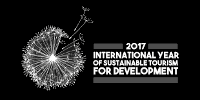Make Poverty History: Tourism Can Help
10% of the world population, 735 million people, still live in extreme poverty, struggling to fulfil the most basic needs like health, education and access to water and sanitation. (World Bank)
The official international poverty line is defined (since 2015) at $1.90 or below per person per day using 2011 ‘international dollars’, a hypothetical currency that adjusts for price differences between countries (purchasing power parity) and measured in prices of 2011 to adjust for price changes over time (inflation). This poverty threshold has seen incremental increases over the years, previously: $1.00 per person per day (1990), $1.08 (1993), $1.25 (2008).
Definitions of poverty matter: They define the standard at which we find being poor unacceptable and set the bar for responsibility and pro-active support. But we may shy away from talking about it through awareness - or guilt - of inequality.
Poverty alleviation is one of the greatest global challenges, thus Sustainable Development Goal #1 of the 17 Global Goals:
SDG #1 “End poverty in all its forms everywhere"
Progress on Sustainable Development Goal 1 No Poverty
10%: Globally the number of people living in extreme poverty in 2015, having declined from 36% in 1990, but change is decelerating.
17.2%: the worldwide poverty rate in rural areas - more than three times higher than in urban areas.
8% employed workers and their families worldwide live in extreme poverty - having a job does not guarantee a decent living (2018).
20%: children and people in developing regions, one in five, live in extreme poverty.
55% of the world’s population – about 4 billion people – did not benefit from any form of social protection in 2016.
6%: Projected global population still living in extreme poverty in 2030, missing the target of ending poverty, even before COVID-19.
8.2%: total human population in poverty due to the Covid19 economic fallout, increase by as much as half a billion people.
80%: of those in extreme poverty live in South Asia and sub-Saharan Africa, with an additional 32 million and 26 million people, respectively, living below the international poverty line as a result of the pandemic.
30: The number of years since poverty since last increased globally, since 1990. (UN Stats).
The Impact of Covid on SDG 1 No Poverty
8.2% - total human population in poverty due to the Covid19 economic fallout, an increase by as much as half a billion people.
This is the first time that poverty increased globally in thirty years, since 1990 (UN Stats).
The worst economic fallout since the Great Depression is expected.
The pandemic highlights the importance of robust social protection systems and emergency preparedness for safeguarding the poor and vulnerable.
Challenges of SDG1, No Poverty
Poverty can be relative - when people do not have a certain minimum level of living standard compared to the rest of society in the same or other country (Some nations develop their own poverty lines). Or it can be absolute (extreme, destitution) - a lack of means necessary to meet basic needs such as food, clothing and shelter, the same independent of location. The former president of the World Bank, Robert McNamara, described absolute poverty as,
“a condition of life so degraded by disease, illiteracy, malnutrition and squalor as to deny its victims basic human necessities”
Poverty is multifaceted and can comprise social, economic, environmental and political elements. For example, areas of poverty may seriously lack employment opportunities especially for women, who then don’t feel they have the right to contribute to household discussions and that they are not as well respected as men within the community. It also impacts on wider society, particularly important in areas where access to water, sanitation, medical care and employment opportunities is traditionally limited: Where women earn their own money, household spending on health and education increases.
The multidimensional poverty index (MPI) is an aggregate measure of deprivation taking into account poor health, lack of education, inadequate living standard, lack of income, disempowerment, poor quality of work and threat from violence.
So many of the Sustainable Development Goals affect and are affected by poverty - possibly why End Poverty was created as SDG Goal #1. There is a correlation between income inequality and higher rates of health and social problems (eg. obesity, mental illness, incarceration), lower rates of social goods (eg. life expectancy, educational level, social mobility) causing trust, anxiety, excessive consumption and further illness.
Unsurprisingly, the downward spiral leads to greater volumes of people at the bottom of the pyramid: As wealth increases, so fewer people have it. The most have the least.
Just 1% of the world population controls 50% of the wealth; the other 50% of wealth divided between 99% of the world. (The Guardian, 2016).
Such inequality may initiate growth from entrepreneurial value-demanding consumers, The Fortune at the Bottom of the Pyramid, which, if sustained, may lead to improved wealth distribution. However, the gap between the Top of the Pyramid (ToP) and the Bottom of the Pyramid (BoP) is widening over time: Global inequality is growing.
Poverty Reduction over No Poverty?
Given the current economic model built on GDP, it would take 100 years to bring the world's poorest up to even the previous poverty line of $1.25 a day, even then missing the poorest 1%; let alone taking into account the revised poverty-line of $1.90 per person per day, the previous $1.25 having been deemed insufficient to survive on (The Guardian, 2015). Realistically, people may need more like $5 per day minimum, which could take 207 years: Poverty reduction is possibly more realistic than eradication – even then assuming no economic or ecological crises in the meantime - and the Covid pandemic has since hit.
Poverty alleviation involves improving the living conditions of the already poor. Development may be constrained by a lack of freedoms: Land and property rights, access to finance and technology; corruption and political instability can discourage investment and support by government in education, health and infrastructure. Foreign aid budgets may be reduced, tie governments into monopolistic trade relations and create unsustainable dependencies.
Historically successful amelioration shows state-led change combining economic and social policies: Social issues aren't a consequence of economic growth turned on their head, instead looking at structural causes and drivers of poverty, social inequality and environment degradation to create better conditions for economically, environmentally and socially sustainable futures.
Economic and Other Measures of Poverty
Using GDP as a measure of poverty is perhaps unhelpful: Based as it is on extraction, production and consumption, its growth doesn’t necessarily or really benefit the poor: The richest have been shown to benefit most, and ‘trickle-down’ ineffective. Absurdly, the average income would have to be $1.3 million per year simply so that the poorest two-thirds of humanity could earn $5 per day (The Guardian, 2015), and if that were so, how much of the planet would we end up destroying in the meantime to create such levels of GDP?
Rather, social policies need to consider redistribution of wealth, and other definitions and measurement of what it means to be “poor” - for example, aiming for the Happy Planet Index of nations’ sustainable well-being for all. For indigenous peoples, poverty isn’t about economics, but as Joan Carling, indigenous rights defender from the Kankanaey tribe in the Philippines, associated with Tebtebba, points out,
poverty is about our land, our well-being, our spirituality, our dignity - and when these are affected then we regard ourselves poor.”
A focus on economic growth can actually lead to grabs on their land, the displacement of indigenous peoples and to resource extraction without their permission. Sustainable development requires a human rights perspective and inclusion (Capacity4dev, 2017).
Global Poverty Location
The greatest areas of poverty are Sub-Saharan Africa and South Asia.
Poverty reduction is not uniform across the world; prospering countries such as China, India and Brazil have made more progress in the measures of absolute poverty reduction than other countries, but of course it may not benefit all.
How can tourism help poverty?
Of course, tourism cannot solve all poverty problems alone. But it can be well positioned to foster sustainable growth and development in areas of poverty and lift people out of it. Pro-poor tourism pro-actively focuses on the end result of net benefits for poor.
Tourism represents approximately 10% of global GDP : US$7.2 trillion
Tourism is one of the largest and fastest growing sectors, labour-intensive so employment-reliant, providing jobs, income and entrepreneurial opportunities at community level, empowering less favoured groups such as youth and women, and all in areas of a country that other sectors might not reach.
Tourism’s value in the global economy is enormous (WTTC, 2019):
10.4% of global GDP : US$8.8 trillion, exceeding agriculture, banking, automotive manufacturing, and mining.
$2.8 trillion direct global GDP contribution - more than automotives.
1 in 10 jobs: 319 million (123 million direct, the rest indirect & induced)
1 in 5 new jobs in the last 5 years
Growth of 3.9%: out-performing the wider economy (3.2%) for 8 consecutive years, now the 2nd fastest sector in the world, behind Manufacturing (4%) and ahead of Construction (3.4%), Retail (3.3%), Healthcare (+3.1%), Agriculture (1.8%), Financial Services (+1.7%) and Communications (1.7%)
6.5% of total global exports
27.2% of total global service exports
Tourism in many developing and least developed countries is the most viable and sustainable economic development option, and in some countries, the main source of foreign exchange earnings.
Whilst there is a risk that tourism further separates wealthy tourists in luxury hotels from poor locals prevented from accessing their own natural heritage such as beaches, local people can be the tourism beneficiaries.
There are now almost 1.5 billion international tourists whose expenditure can be a force for good worldwide. The potential for tourism to help eradicate poverty is enormous.
Jascivan Carvalho certainly believes it. He’s spent 20 years working with local communities to help eradicate poverty in Ecuador:
“We act today for a better tomorrow”.
Income can provide people the opportunity to not just eat, but provide themselves better food for their health, which puts less pressure on already-oversubscribed health services, human-wildlife cattle conflict and poaching conservation issues, or even children 'orphanage care' placements for exploitative voluntourism. Income from tourism can be invested into responsible community projects to help develop and increase those same health services, birth control to limit further population demand, clean water and sanitation, family and work support.
In India, this was the reason for setting up these village to village trekking trips in the Himalaya foothills. At the core of the Village Ways is a homestay-like guesthouse, with the tourism set up to run alongside to support, but not displace, traditional rural livelihoods.
Community, employment, education and health are also the focus for Tiger Mountain Pokhara Lodge in Nepal, to lift the locals out of poverty, who also make sure guests don't give directly, so as to not encourage begging (disempowering), sweets (bad for teeth) or kids to be out of school.
In South Africa, the “Best in Poverty Reduction” award-winning Grootbos Foundation has played a fundamental role in the uplift of the local community and townships under three programmes: Their Green Futures College offers horticulture, conservation and hospitality training; their Football Foundation - health and wellbeing; and their organic farm Siyakhula - enterprise development, entrepreneurship and food security.
At Lake Nicaraugua, owner Karen committed to building Jicaro Island Ecolodge as a local asset for the local people and economy from the outset.
In Malawi, RSC run trips specifically designed around the Sustainable Development Goals, offering incredible insight into key challenges facing rural communities in Africa, all the while helping eradicate them through the tourists’ immersive learning experiences.
Educational workshops for groups run in conjunction with local partners include Healthcare, Education, Environment, Climate Change, Water, Fair Trade, Sustainable Agriculture and Local Economic Development.
Investment in infrastructure - roads & transportation – is also required for tourism services, often to the benefit of local people too. Tourist services may support more training and education, capacity building in the community, as well as local educational needs like school building, equipment and meal provision to reduce absenteeism.
Chumbe Island Coral Park not only employs and trains local people, including supporting illegal fishermen to become guides, but also created a huge marine conservation education programme for the whole of Tanzania, as well as teaching local school students, including Muslim girls, to swim and appreciate the beauty of the environment through snorkelling.
Income from tourism can support the local environment, including marine conservation and key species, the sense of place, engendering in local custodians a strong sense of responsibility, pride and value for their home.
In Madagascar, SEED Madagascar‘s mission to foster Sustainable Environment Education and Development is to tackle extreme poverty in this, one the planet's most unique and endangered environments. Despite its flora and fora abundance, it’s one of the world's least developed and most impoverished countries, ranking 161/189 in the 2018 UN Human Development Index: 70% of people in live in multidimensional poverty (UNDP, 2011), with 92% living below the poverty line of $2 per day (World Food Programme). SEED Madagascar enables you to hands-on help with solutions for health, conservation, education and livelihoods as a volunteer.
In 2012, the Maasai Wilderness Conservation Trust with Campi ya Kanzi community ecolodge, won The Equator Prize of the UN Development Programme Equator Initiative recognizing outstanding efforts to reduce poverty. Its Payment for Ecosystem Services fund also supports Maasai pastoralists income from predation of their herds, supporting livelihoods and conservation.
The right and access to land, ownership and microfinance can also bring the opportunity for local tourism enterprise to develop, creating more opportunity for self-sustaining wealth generation. In buying from local hospitality business, tourists can support the local supply chains, and in turn the poorest of consumers thus contribute to sustainable development.
Tourism also provides a way for local people to support, promote and even keep alive their culture. While over-tourism can commoditise culture, carefully managed tourism can bring a great deal of pride and empowerment to communities’ traditional skills, sense of their place and importance in the world.
Tropic Ecuador are co-creating the first community-based tourism programme on Floreana Island, The Galapagos, where historically islanders have felt negative impacts of tourism but received few benefits.
In India, Village Ways ensures tourism supports but does not displace traditional skills and livelihoods. Wherever possible all necessary work is undertaken by the villagers: Hosts, guides, cooks, housekeepers and porters are all drawn from different families through the villages, all undertaking training to improve skills and sharing the benefits. Supplies (food, building materials, furnishings etc.) are sourced locally and the use of local skills is encouraged and developed, with training and guidance provided where needed, for example, in selling craft products.
Nikoi Island, as well as employing nearly 100% local people and offering them fantastic training and health benefits, have always supported the local suppliers indigenous Orang Laut people and their cultural identity.
They’ve seen their traditional fishing net sewers introduced to jewellery making, and the creation and exhibition of a Swarovski crystal fishing net, displayed at the National Museum. And the Island supports the local traditional jong (model sailing boats) race twice a year, helping continue interest in this coastal cultural event from younger generations.
By 2030, The Sustainable Development Goals aim to eradicate extreme poverty for all people everywhere, and reduce at least by half the proportion of men, women and children of all ages living in poverty in all its dimensions according to national definitions
Links with the other Sustainable Development Goals
Goal 2 - Zero Hunger: Fishing and agriculture are traditional livelihoods supporting millions of lives worldwide.
Goal 3 - Health & Well-Being: There is a correlation between income inequality and higher rates of health issues (eg. obesity, mental).
Goal 4 - Quality Education: Children from the poorest 20% of households are nearly four times more likely to be out of school than those of the richest households. Becoming trapped in a poverty cycle can result in limited opportunities for employment or income generation.
Goal 5 - Gender Equality: Tourism jobs, income and entrepreneurial opportunities empower less favoured groups such as women.
Goal 6 - Water: Lack of water results in a vicious circle of ill-health, missing work and education, hampering income & social mobility.
Goal 7 - Sustainable Energy: Will help poverty by putting an end to energy poverty.
Goal 8 - Employment & Economic Growth: Decent, fairly paid, secure employment lifts people out of poverty.
Goal 9 - Industry, Innovation & Infrastructure: Investment and support can alleviate poverty.
Goal 10 - Reduced Inequalities: whether abject or relative, poverty means some people do not have enough to live on.
Goal 11 - Sustainable Cities & Communities: Where poverty exists, cities and communities cannot be sustainable .
Goal 12 - Sustainable consumption and production: Sustainable consumption and production will help poverty alleviation.
Goal 13 - Climate Change: The most poor are the most vulnerable to climate change and disproportionately burdened.
Goal 14 - Life Under Water: Fishing and the marine environment offer livelihoods supporting millions of lives worldwide.
Goal 15 - Life on Land: Rural impoverished communities often rely on their environment for food, shelter and livelihoods.
Goal 16 - Peace and Justice: Unjust corruption, bribery, theft, tax evasion and exploitation come at the cost of sustainable development.
Goal 17 - Partnerships: Tourism can partner with NGOs to ensure poverty-stricken local people benefit.
